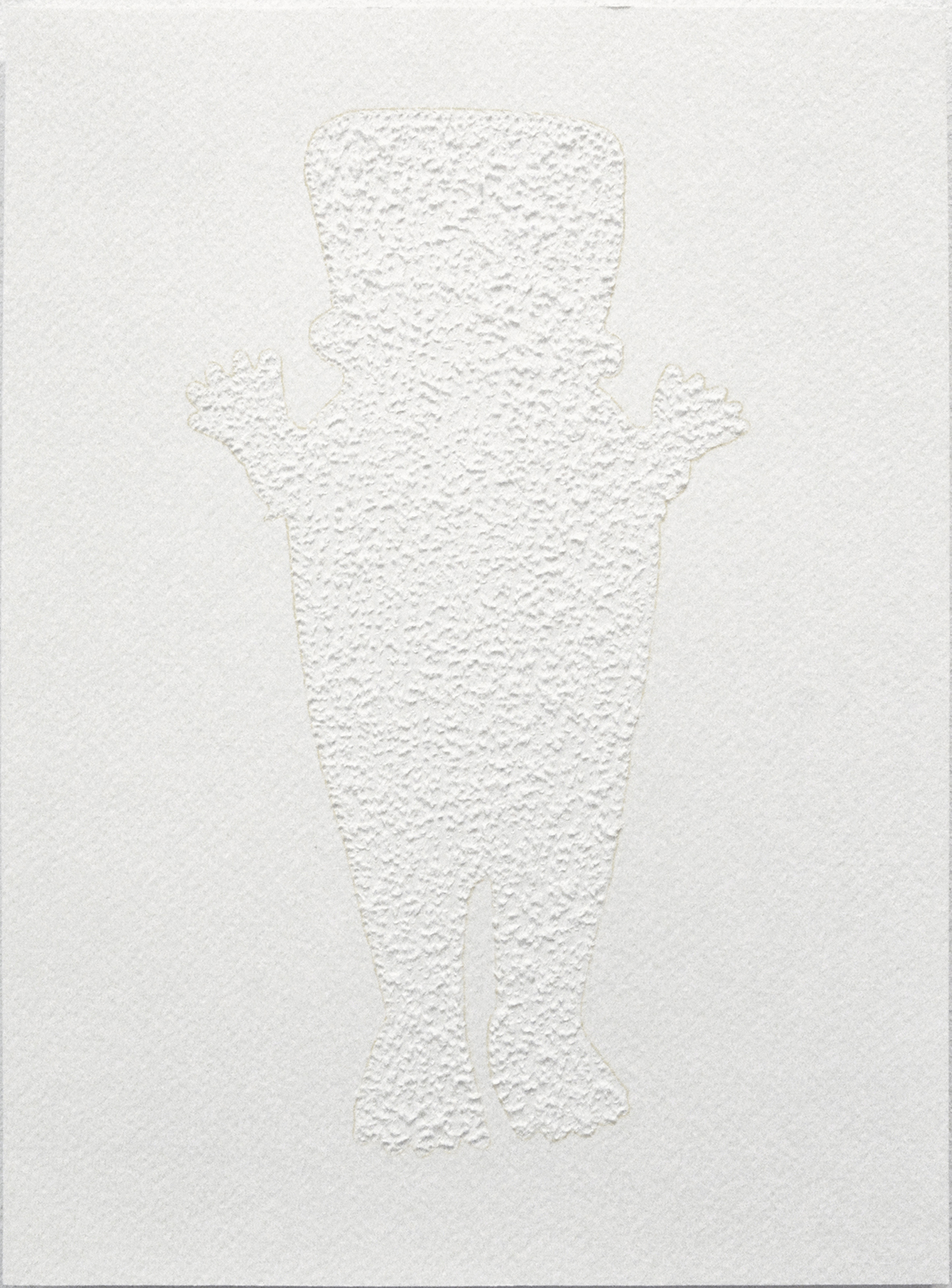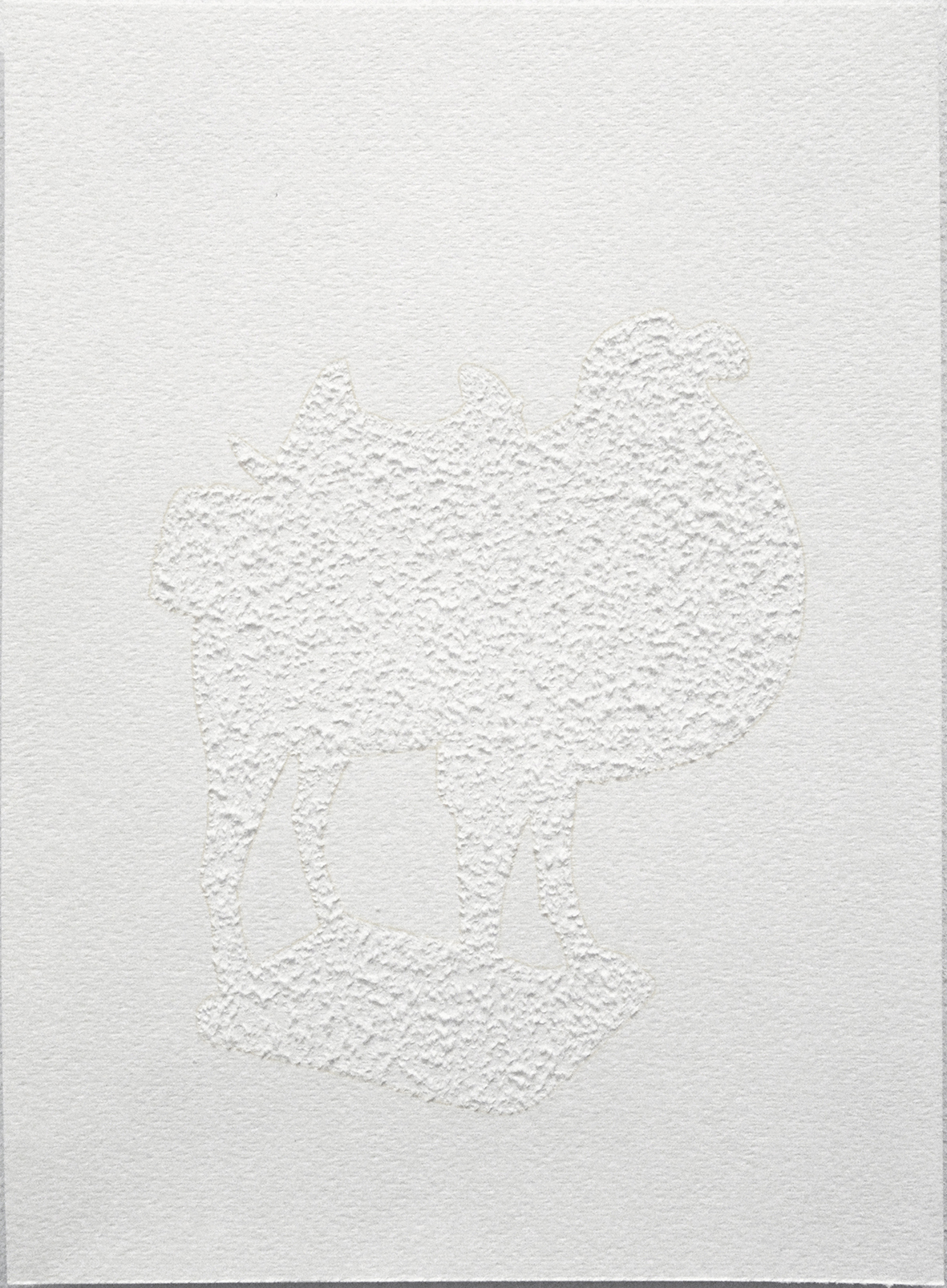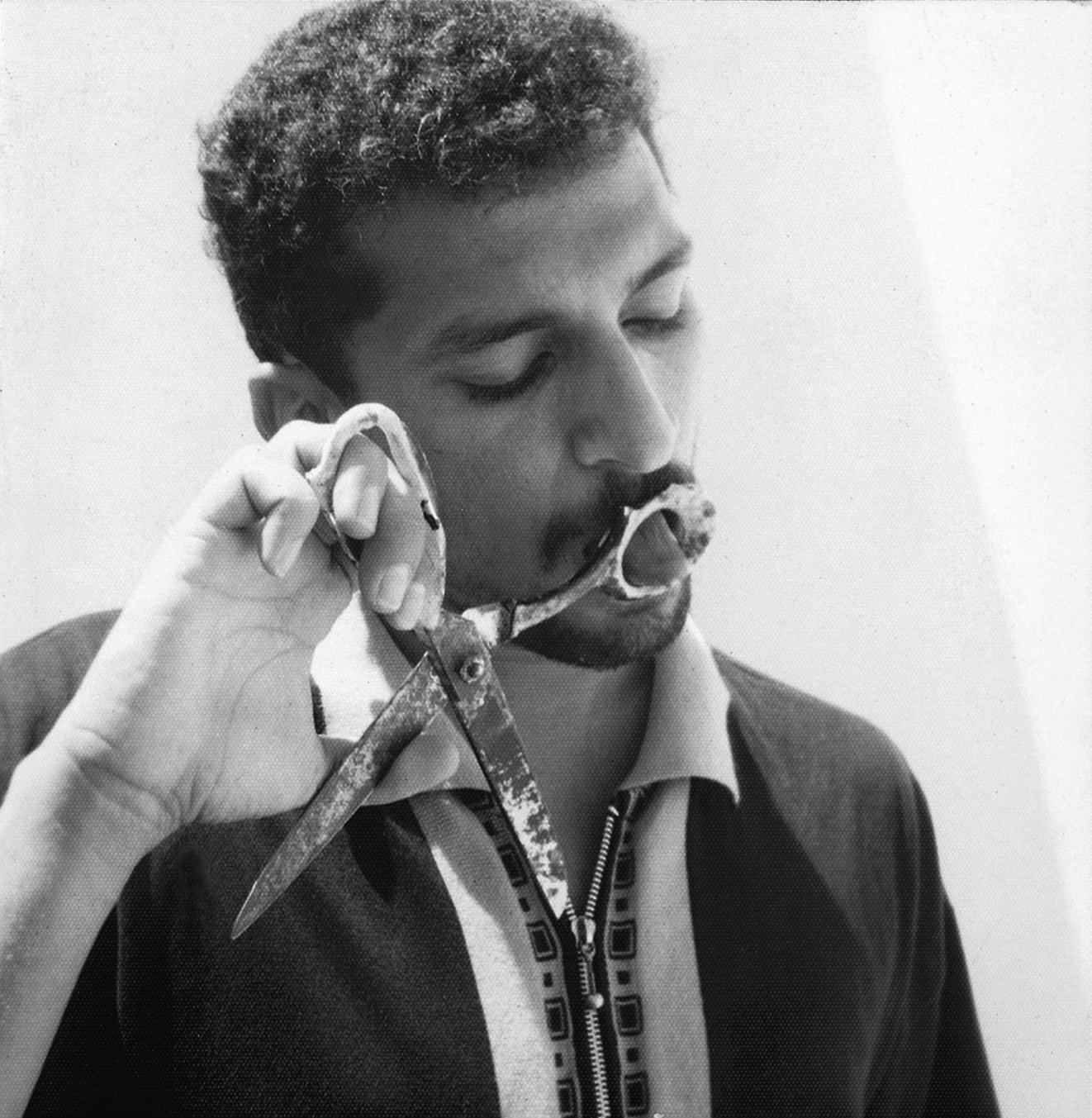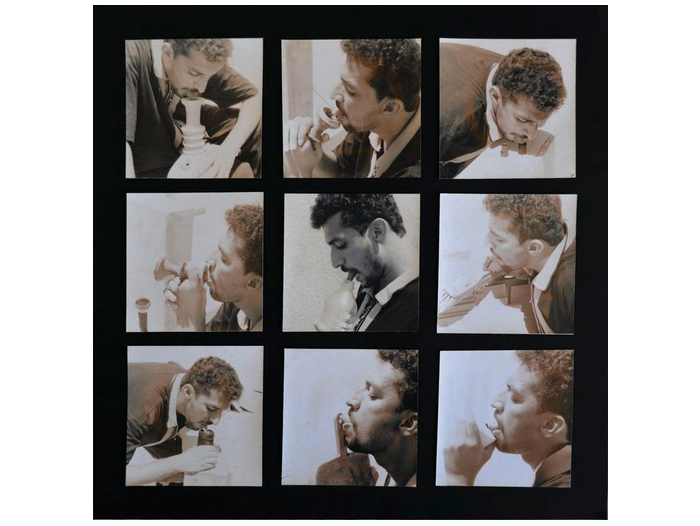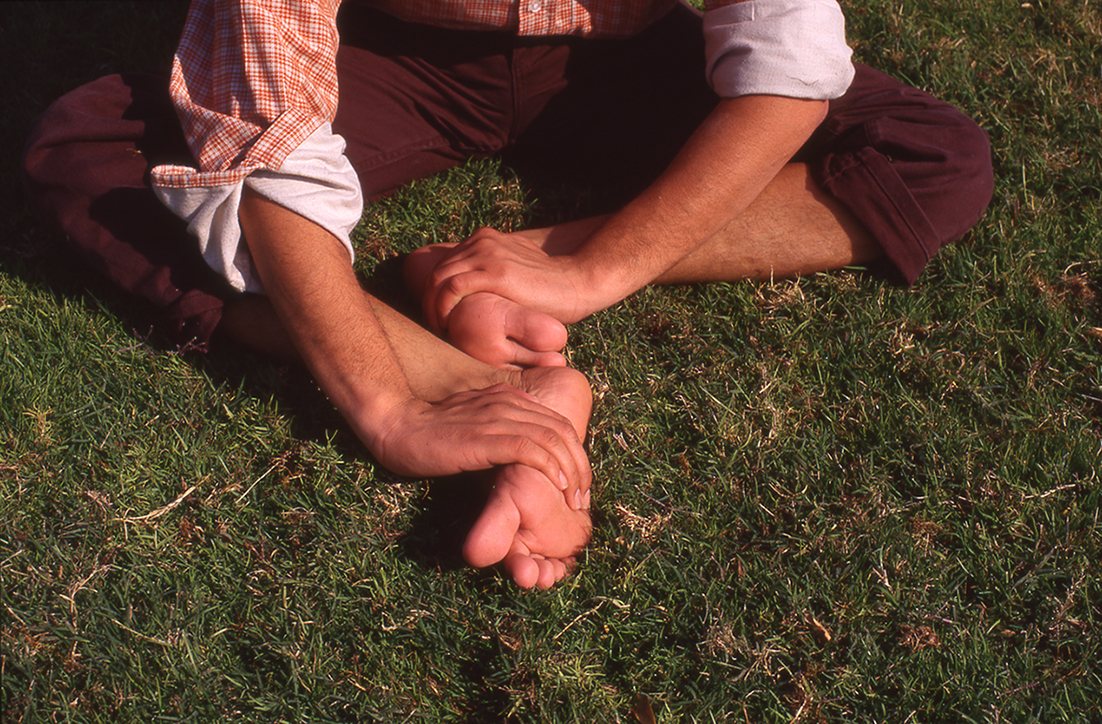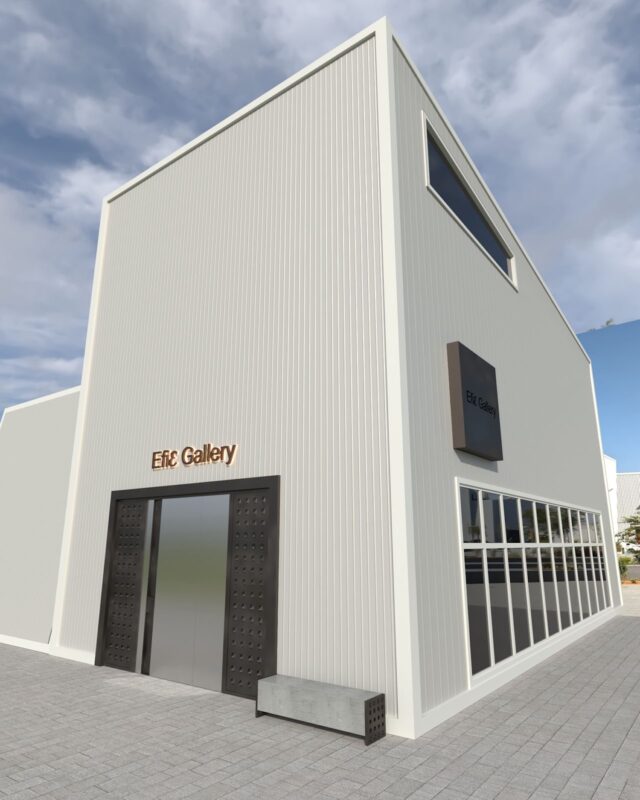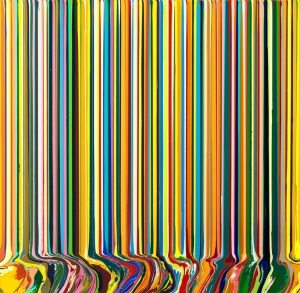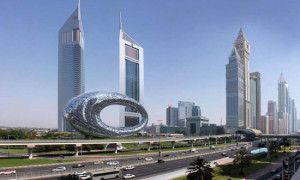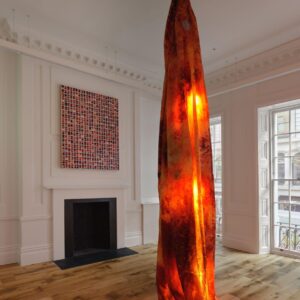Sound of Objects is performative of Sound, a medium moved beyond aurality in Mohammed Kazem’s syntax.
The attempt is to extrapolate what Sound is for Kazem. Given the loaded multiplicity of signifiers the artist has invested and extracted from the word, the term is interrogated appropriately. A seemingly vast array of media and subject matter gesture its sense. Tracking back over 20 years, with early approaches from the 90s to the present, the pieces are fragments which (re)-constitute the essence of his investigations.
Stark, singular noises staccato around the gallery, an aural souvenir of The Watermill Center, the site of inception for Sound of Objects – 79 works in Kazem’s idiosyncratic scratches. Most fundamentally this is a documentation of the ethnographic objects encountered during this 15-day residency.
Sound of Objects, 2014
Sound has been rendered variously: here are textured scratches that muss the surface of paper and block the form of the associated piece. However it is articulated, there is a process enacted, describing the essence of an object, and the attempt is to side-step the cumbersome inaccuracies of any language system. The descriptive process is more than a direct sensory rendition “when I scratch, I create Sound – but this Sound does not exist, it’s visualized”. Kazem also equates Sound to a visual experience, describing the encounter of light and the objects at The Watermill Center, “when the sun moved, the Sound moved… Because of this light, they have a Sound.” Multi-sensory, Sound is constituted of the elemental experience of the object, but it is and is not light, noise, gesture, touch.
Sound of Objects, 2014
But to approach Sound of Objects as the synesthetic evocation of objects would be reductive – this is not some mimeographic process. Kazem outlines the development of the series, with primacy on the encounter between the object and the place, “I felt the object had a relationship with that place, and it gave the objects a different dimension. It’s about showing the relationship. I photographed the objects, but I asked myself ‘why am I not also going to touch them?’… It’s something intangible, not visible, I am using these little elements [of atmosphere] intentionally all the time.”
Tongue, 1994
This performance of process is epitomised by Tongue, a mid-90s experiment, coinciding with the earliest scratching works. In 36 monochrome images, Kazem is caught with his tongue exploring the orifices of household objects. The images are uncomfortably evocative of some non-specific, not-experienced feeling, almost uncanny in the simultaneity of familiar and unfamiliar – we know that sensation, though we’re unlikely to have probed these metallic places for ourselves. There is a kind of voracious appetite implied, a desire to really encounter the objects, to defamilarise as the means to know more. It’s the moment of touch that is the charged point of encounter, coalescing into Sound.
Tongue, 1994
Touch further complicates the rendering, making the artist’s subjectivity central to the process, “touch is not the sound of the object, it cannot sound itself, it’s the connection, with my finger, it’s a very primitive way of meeting things, neither the subject nor the object has that meaning without the other” Kazem explains.
Showering, 1998 (reconstituted 2014)
In this way, identity becomes bound up in the works. In some, this manifests as a quasi self-portraiture via metonymic transference. Most overtly seen in Showering and Legs and Arms, reconstitutions of specific personal experiences – the former a bodily depiction in the soap, water and hair sloughed from the self one morning, the latter play-acting childhood solitude and bodily fascination in cropped photographs. There is an intimacy once removed in each piece, which, whilst not immediately similar to the Sound of Objects series, is also performing and documenting experience, hinging the subject to a kind of object-ness to associatively express a larger sensation.
There are also formal similarities to Sound of my Room, an earlier series not shown here, but which charts the artist via personal belongings and a transition through a personal space through touch. It’s useful to contrast the relationships between the personal and the unfamiliar in the two series, with the very alien nature of the objects treated here making subjectivity and environment raw and of the moment, rather than exploring an invested subject-object relationship. Kazem describes the primacy of the subject’s encounter with context in Sound of Objects, “the environment had elements, and I needed to use those elements: the light, the brightness, the colours. Considering what is the purpose of this building? What is the function?”
Spatial topographies emerge variously, most obviously in lauded works like Walking on Water, the UAE pavilion at the 2013 Venice Biennale, incorporating GPS to create literal mappings of the self in its context. The data is put to alternative uses; for Kazem, “it’s not about going from one place to another, it has become my raw material”. This is a less obvious but still fundamental process at play in the works presented here. Place is the element in which the Sound happens, and without consideration of these contextual particularities we’re in the vacuum where Sound cannot exist.
Kisses, 2014
Places at different times are distilled and layered spontaneously. Kisses are many moments kaleidoscoped, the romantic topographies of strangers mapped via chewing gum stains on Philidelphia streets. Kazem describes the creative encounter, “I noticed there was gum everywhere… I bought chalk, and I joined this gum randomly. It was improvisation – you don’t know who is kissing who, and you don’t know if they are still alive. This work has a poetic way of looking at things. But it is part of the environment, I couldn’t do it without what was already there.
As in Showering and Legs and Arms, the lapsed-time that structures these works is another duality, where determinedly reconstituted moments are telescoping the past to en-act something new.
Legs and Arms, 1995
So the creation is the meeting point of an elemental trifecta – the subject, the object and the place. But the dynamism of the artwork lies in the creation and the consumption. In this way, points in time are aligned to render something beyond a lived encounter with either object or place – the moment of creation and the documented output encountered elsewhere.
The subject matter might lend itself to a staid exhibition, ethnographic objects conjuring the reverent hush of museum spaces, where dust dances in dimmed light. Yet, Kazem’s treatment of these objects, the ignition of their Sound, invests them with more than their ‘object-ness’, and calls forth places, people, and the artist with a voracious appetite for living and experience.
The great elucidatory success here is the curation, an articulation of the artist’s nebulous pre-occupation via works that seem at best only tangentially related. This achieves a broad delineation of the process; all accumulating to grant a better conception of what Sound is than any singular piece could do alone. This multiplicity is itself indicative of the nature of the medium, not something easily communicated but comprehended through side-long fragmentary glances, in a place beyond the narrow confines of ineffectual language.
Ultimately, Sound emerges as a methodological attempt to articulate some essence of experience beyond the linguistic, neither recapturing and rendering it as documentary artefact, nor instigating a new experience for the viewer, but recapitulating the former within the context of the latter to gesture at what cannot be articulated. This is a moment of inception that is about that instant, that material and that atmosphere, never a ritual, always spontaneous and sounding something for our future / present encounter.
Sound of Objects is at Gallery Isabelle van den Eynde, Alserkal Avenue, Dubai until January 4th
All images courtesy the artist and Gallery Isabelle van den Eynde
